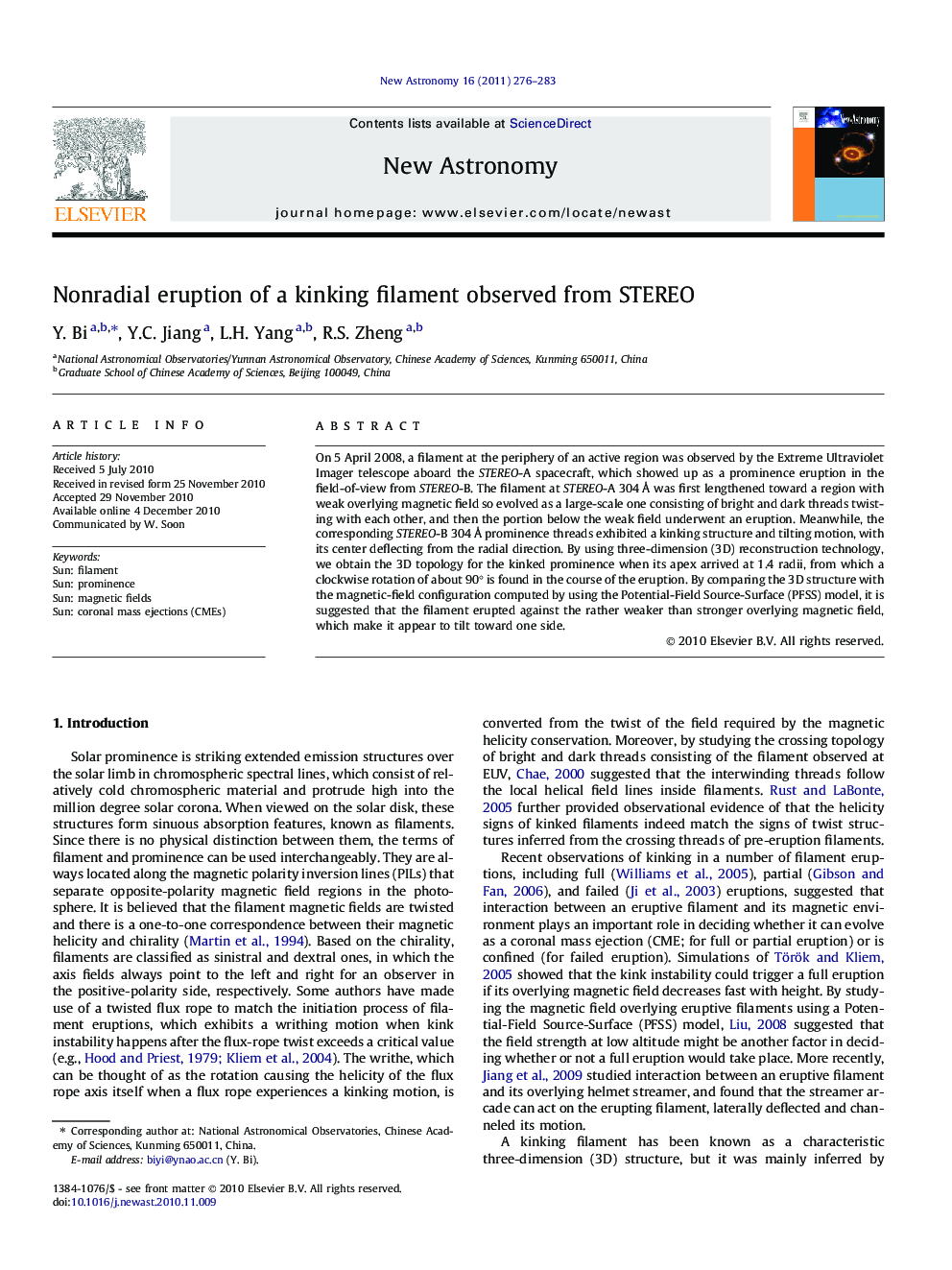| Article ID | Journal | Published Year | Pages | File Type |
|---|---|---|---|---|
| 1779336 | New Astronomy | 2011 | 8 Pages |
Abstract
On 5 April 2008, a filament at the periphery of an active region was observed by the Extreme Ultraviolet Imager telescope aboard the STEREO-A spacecraft, which showed up as a prominence eruption in the field-of-view from STEREO-B. The filament at STEREO-A 304Â Ã
was first lengthened toward a region with weak overlying magnetic field so evolved as a large-scale one consisting of bright and dark threads twisting with each other, and then the portion below the weak field underwent an eruption. Meanwhile, the corresponding STEREO-B 304Â Ã
prominence threads exhibited a kinking structure and tilting motion, with its center deflecting from the radial direction. By using three-dimension (3D) reconstruction technology, we obtain the 3D topology for the kinked prominence when its apex arrived at 1.4 radii, from which a clockwise rotation of about 90° is found in the course of the eruption. By comparing the 3D structure with the magnetic-field configuration computed by using the Potential-Field Source-Surface (PFSS) model, it is suggested that the filament erupted against the rather weaker than stronger overlying magnetic field, which make it appear to tilt toward one side.
Related Topics
Physical Sciences and Engineering
Physics and Astronomy
Astronomy and Astrophysics
Authors
Y. Bi, Y.C. Jiang, L.H. Yang, R.S. Zheng,
